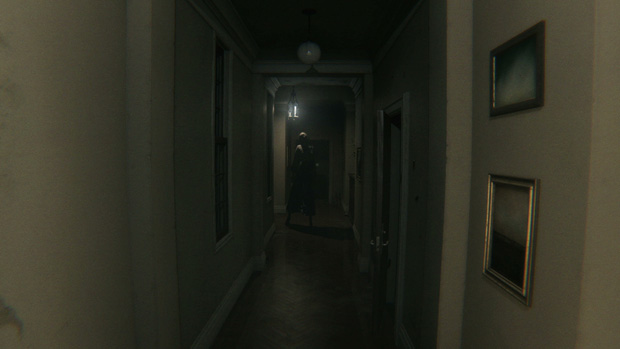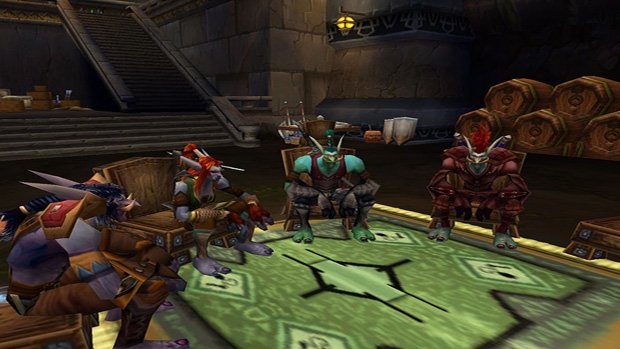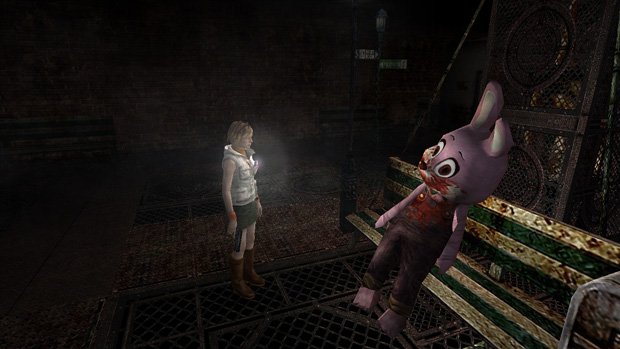Old games are dead without you
I'm shoving video games into a yawning cardboard box. When I lift the whole thing and carry it to my new apartment, millions of lines of programming will have a groan-worthy weight to them. It's a heavily ironic piece of the all-digital future, in which the fate of P.T., recently spirited away by Konami, could be the fate of all games that aren't fortunate enough to end up in someone’s box. But then you've probably heard these fears over preservation before.
Right now we think of game preservation just like things in an attic: Locked up, organized and safe to forget. It's my box of video games, gathering dust somewhere until the time is right for me to come back. If I never return, though, it will forever be a box of things, in the same way that a game is a device frozen until someone presses start. P.T.'s abduction reinforces the importance of game storage and access, yes, but it also shows that true game preservation is impossible without players.

Konami's motions are unsettling to games as a whole, especially if you're one who believes a game is more expression than product. This isn’t an accidental wipe of data, but a deliberate removal of access to an intricate piece of work - by the group that put it out in the first place. If a game publisher doesn’t see this as damaging to its ecosystem, then the diligent preservation of games is only going to get harder.
And it’s already hard. Before you even get to the numerous, fragmented technical configurations needed to run or emulate entire generations of games, there’s a more philosophical problem to consider. The nature of a video game means that even physical storage - whirring hard drives in a server, or piles of discs inside a vault somewhere - is an incomplete method of capturing the unique intersection between player and designer. We can save the code, the rules, the visual output, but that’s the stuff inside the box. The game is what happens when you poke the box and see a ripple.
Unlike books and films, which retain their authored shape regardless of someone being in the room to appreciate them, games need a human for faithful preservation. Yes, preserving the code, art and access is paramount as well, yet all these exist outside the cycle that games thrive on. The designer sets the rules and builds the world, the player enters, sometimes with precision and other times in a drunken stumble, and then … things happen. We observe, we push, laugh and fall, and the game wobbles and reshapes itself in ways that are either as intended or not even predicted. And then things happen again.

It’s not easy to envision Minecraft without someone there to build inside of it. Though the game exists as a machine - a product - it doesn’t come alive until there’s a Steve chipping away at rocks and building a castle over a lake of lava. That is what Minecraft is: a human act both inside and inseparable from the theater itself. Even when a game is overtly staged - an Uncharted or Asura's Wrath - there's no initiating step forward without the player and no small improvisations and failures to color the story along the way. Does anything in a game really happen if it doesn't happen to you?
We can store all the bits that make up Pac-Man and his neon ghosts, archive the blueprints of every maze, but you don’t have the full game unless you include the gasp of a player turning away from a one-gulp death at the last moment. That moment is the game.
Weekly digests, tales from the communities you love, and more

When we recall Silent Hill fondly and ask for it to be saved forever, we ask to preserve the unsettling emotions we felt as we played it, so that others can feel them too. Saving the game’s code and imagery is like burying it in a tomb - it’s crucial, but for true preservation to happen a player must enter that tomb and bring the game back to life. Community-driven behemoths like League of Legends and World of Warcraft face arguably the grimmest version of this idea – their many fallen competitors, played by no one, are dead and lost, whether or not you can download them.
None of this is counter to my belief that game preservation is fractured, lacking and now injured by a publisher pulling the plug on one of its own games (likely for boring legal reasons). It’s a shame that only seems to grow when you consider the full potential and unique properties of games. Even if you have them stored, whether it’s online or in a corrugated box, you’re still missing what makes them so fascinating and worth cherishing.

In some ways, YouTube and its army of Let’s Play enthusiasts offer the ideal form of game preservation, with a person paired with a game in motion. You can sneer at some of the commentary or attitudes on display, but these players are playing, living and documenting games in an extremely accessible way. Ten years from now - hell, make it five - P.T. may be more well-represented by a Let’s Play video than anywhere else. A 15-year-old sitting in a dark room, whispering into a crappy Logitech headset, will be a better historian than Konami.
When I move and unpack my games from their box later, it will be with preservation in mind, but not just the kind that takes up space in a closet. I can’t rely on game makers to save these works for the future, so I’m becoming an amateur archivist and doing what must be done to all games if they hope to truly live on. I’m going to play them.
Ludwig Kietzmann is a veteran video game journalist and former U.S. Editor-in-Chief for GamesRadar+. Before he held that position, Ludwig worked for sites like Engadget and Joystiq, helping to craft news and feature coverage. Ludwig left journalism behind in 2016 and is now an editorial director at Assembly Media, helping to oversee editorial strategy and media relations for Xbox.



